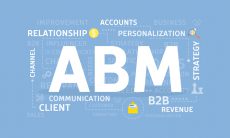“What?? You’re kidding!! You just can’t trust anyone anymore!!” Too often we hear this reaction these days. Sadly the level of trust around the world has declined dramatically over the past few years – just look at the way people see the government, CEO’s, foreign countries with corruption, our Congress, and many brands (company and product/service).
Branding is basically about developing emotional connections – i.e. trust-based relationships that will cultivate greater loyalty for purchase decisions. Emotions are the primary drivers for behavior and these decisions, not cognitive thinking. And there is no emotion more important than the trust for a brand.
So why is this essential emotion of trust in such dire straits? The biggest reason is the rise of transparency due to the internet, and how so many customers rely on digital research and interaction with peers for more honest assessments. Skepticism is most acute among the Millennials. Only 6% of them consider online advertising credible, whereas 92% of all consumers say they trust earned media (e.g. social media, word-of-mouth, recommendations from friends/family, etc.) source: Webbed Feet.
The recent 2014 Edelman Trust Barometer identified the biggest gaps for the key opportunities for re-gaining trust for companies: actions that are most important to people versus the actual delivery or performance:
- Listening to people – 59% important versus 31% performance
- Treats employees well – 58% versus 29%
- Is ethical – 60% versus 29%
- Puts customers before profits – 56% versus 27%
- Acts responsibly to a crisis – 56% versus 28%
- Transparent and open – 56% versus 27%
- Communicates often – 52% versus 27%
Re-building trust for brands can be a challenge, but digital and traditional marketing offers new opportunities to diagnose this problem, create a fresh perspective, and ultimately develop new content that is more credible, helpful and buzzworthy. The meaning and prerequisites for “trust” can vary for each category and by customer segment, so it is critical to first understand the key emotional drivers of the customer and what’s needed to change their attitudes and behavior. Here is our 4 step process for restoring brand trust:
- Research Assessment – a combination of traditional research and new online diagnostic techniques that are cost effective. It is critical to start with a new look at the target customer, so that their problems, needs and interests can be better understood. There are practical models for listening to customer dialogues in social media, to identify trends, challenges and hence opportunities that allow companies to prioritize and address the key drivers for trust.
- Creativity for New Content– just tweaking old messages or updating brand impressions (product, service or company) won’t do it. Bold ideas are needed for new content, especially for such a skeptical audience. Ideally they’re ones that get their attention, are genuinely helpful, and create an emotional connection. To get a fresh perspective, Ideation or brainstorming sessions should ideally be facilitated by outside experts.
- Execution and Communications – each digital media platform or channel will have its own style and expectations from its audience, so customizing the message to leverage these diverse social media nuances and retain the integrity of the new content ideas is a must, including coordinating with traditional media, PR and sales initiatives.
- Metrics and Monitoring – rejuvenating brand trust can be a long, uneven journey, so selecting and updating constantly the KPI’s (Key Performance Indicators) for improving your marketing campaign along the way is vital.
This model can be effectively applied to any situation that requires a new thinking and a true transformation – for small to large companies, cross border expansion involving diverse cultures, corporate leadership, and of course all products and services, B2C or B2B. More information on how to rejuvenate your brand trust is in our website: www.ThePathfinderGroup.net.








